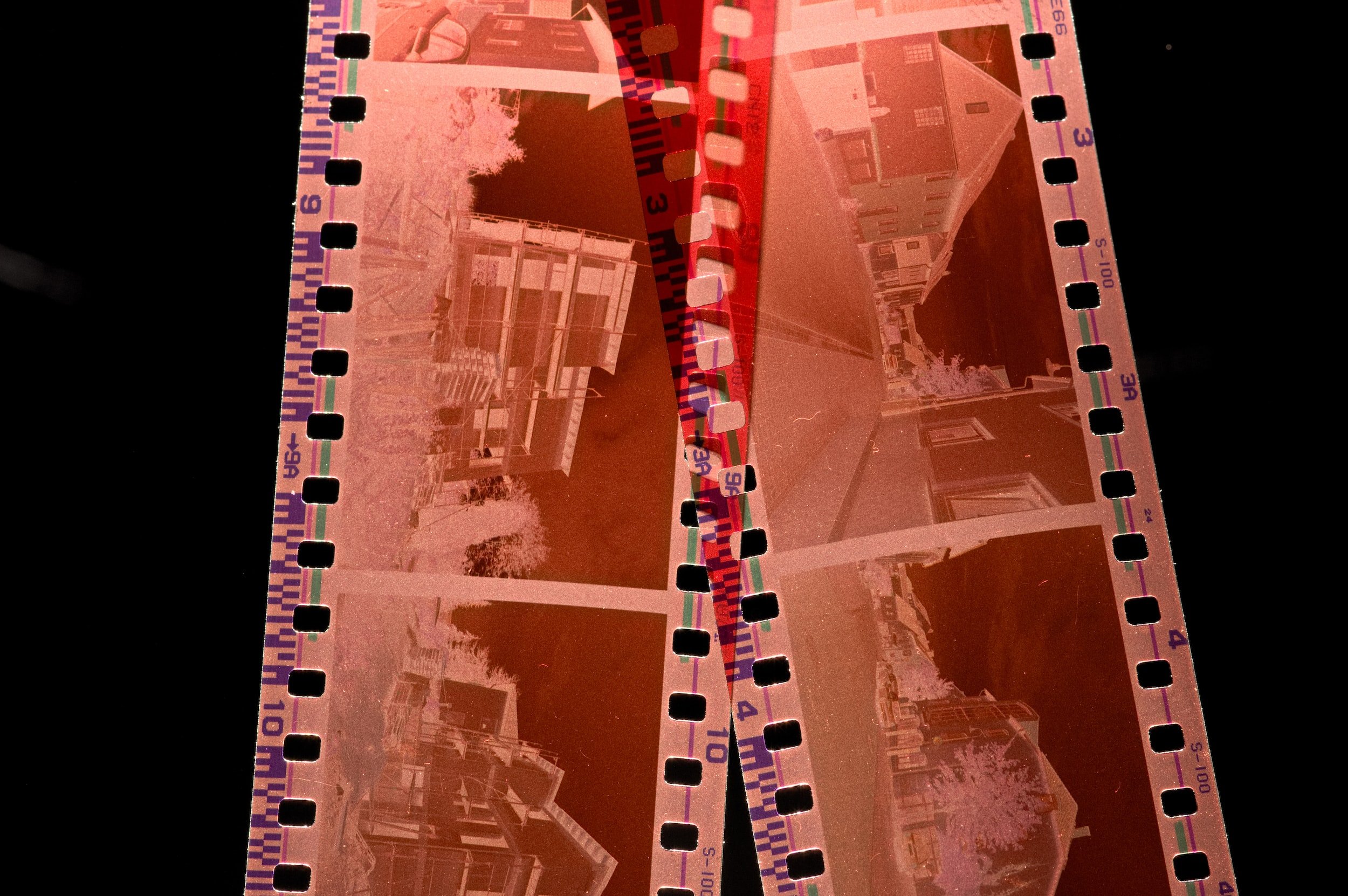Film Photography: The Perfect Union of Art and Science
*Disclosure: This post may contain affiliate links that at no additional cost to you, I may earn a small commission.
In today's digital age, the resurgence of film photography may seem like a surprising development. Yet, there is a growing community of photographers who continue to be captivated by the analog process of capturing images on a physical medium. Film photography is, in essence, a harmonious marriage of art and science. It's a unique blend that combines the technical aspects of exposure, development, and printing with the creativity and vision of the photographer, resulting in a rich and fulfilling experience. This fascinating fusion of disciplines creates a strong connection between the photographer, their craft, and the images they produce. In this blog post, we will delve into the artistic and scientific aspects of film photography and explore the diverse range of people who are drawn to this timeless medium, proving that film is far from obsolete in the world of photography.
The Art of Film Photography: Creativity, Expression, and Connection
Film photography offers a unique platform for artistic expression, allowing photographers to explore their creativity and develop a personal style that sets their work apart. The artistic side of film photography is multifaceted, encompassing various elements that contribute to the overall aesthetic and emotional impact of an image.
Intentionality and Deliberation
With a limited number of exposures on a roll of film, photographers are encouraged to be more intentional and deliberate with each shot. This mindful approach fosters a stronger sense of composition, lighting, and storytelling. Photographers using film are often more selective about their subjects and moments, giving them the space to fine-tune their images before pressing the shutter.
Aesthetic and Visual Appeal
The distinct visual characteristics of film, such as grain, color rendering, and tonal range, contribute to the artistic appeal of the medium. Different film stocks offer varying color palettes and contrast, allowing photographers to choose the best option to suit their vision. The organic grain structure and the way film renders light and shadow can imbue images with a nostalgic, timeless quality that many find aesthetically pleasing.
Experimentation and Technique
Film photography provides a wide range of opportunities for artistic experimentation. Photographers can explore various techniques, such as double exposures, intentional light leaks, or cross-processing, to produce unique and unexpected results. Experimenting with different cameras, lenses, and film stocks can also significantly impact the final image, allowing photographers to tailor their equipment and materials to achieve their desired artistic effect.
Tactile Experience and Craftsmanship
The tactile nature of film photography plays a significant role in its artistic appeal. From loading the film and manually focusing the lens to developing negatives and printing in the darkroom, every step of the process is hands-on, creating a sense of accomplishment and craftsmanship. This tangible connection to the photographic process strengthens the bond between the photographer and their work, imbuing each image with personal meaning and value.
The art of film photography transcends the mere act of taking a photograph; it is an immersive experience that invites photographers to explore their creativity, hone their skills, and forge a deep connection with their work. The analog process demands intentionality, patience, and craftsmanship, resulting in images that reflect the unique vision and dedication of the photographer.
The Science of Film Photography: Precision, Chemistry, and Technical Mastery
Film photography is grounded in science, with its core principles and processes relying on the precise interplay of light, chemicals, and materials. The scientific aspects of film photography contribute to its technical complexity and depth, offering photographers the opportunity to develop a comprehensive understanding of their craft and achieve their desired results.
The Exposure Triangle
At the heart of film photography is the exposure triangle, which consists of aperture, shutter speed, and ISO. These three elements work together to control the amount of light captured on film, dictating the overall exposure and quality of the image. Mastering the exposure triangle is crucial for film photographers, as it enables them to make informed decisions about their camera settings, adapt to different lighting conditions, and create well-exposed images that align with their creative vision.
The Physics of Light
Understanding the physics of light is essential for film photographers, as it allows them to manipulate and control the way light interacts with their subjects and the film. Factors such as the angle, intensity, and color of light can significantly impact the final image, with skilled photographers using their knowledge of light to create depth, atmosphere, and visual interest. By studying the properties and behavior of light, film photographers can refine their techniques and develop a more nuanced understanding of their craft.
Chemistry and Film Development
The development process is a critical component of film photography, involving a series of chemical reactions that transform latent images on film into visible negatives. This process requires a solid grasp of the chemistry involved, with photographers needing to follow specific steps, temperatures, and timings to ensure consistent and high-quality results.
Film development is both a technical and creative process, with photographers able to control factors such as contrast and grain structure by adjusting development times and using different chemical formulas. This scientific aspect of film photography offers endless opportunities for experimentation and fine-tuning, allowing photographers to perfect their technique and achieve their desired outcomes.
Darkroom Techniques and Printing
The darkroom is where the science and art of film photography really converge, with photographers using their technical skills and artistic vision to produce tangible prints from their negatives. Darkroom techniques, such as dodging and burning, require a deep understanding of light and exposure, allowing photographers to manipulate the final image and create prints that reflect their creative intent.
Moreover, the printing process itself involves a range of chemical reactions, with different developers, papers, and toners producing varying results. Mastering the science of darkroom printing enables film photographers to refine their craft and create stunning, high-quality prints that showcase their artistic vision.
The science of film photography is an integral part of the medium, providing photographers with the technical foundation and knowledge necessary to achieve their creative goals. By embracing the scientific aspects of film photography, photographers can develop a deeper understanding of their craft, refine their techniques, and unlock the full potential of the analog process.
The People Drawn to Film Photography: Diverse Interests and Motivations
Film photography appeals to a wide range of individuals, each with their own motivations, interests, and backgrounds. The enduring charm of the analog process and the unique artistic and technical aspects of the medium draw people from various walks of life, creating a diverse and vibrant community of film photography enthusiasts.
Nostalgia Seekers
Some people are drawn to film photography for its nostalgic charm and the sense of history it evokes. The warm, grainy aesthetic of film images can transport viewers back in time, connecting them to the past and evoking memories of days gone by. For these individuals, film photography serves as a bridge between the present and the past, offering a tangible link to a different era.
Mindful Photographers
Others appreciate the slower pace and mindfulness that film photography encourages. The limited number of exposures on a roll of film and the hands-on nature of the process promote a more thoughtful and deliberate approach to photography. This meditative aspect of film photography provides a respite from the instant gratification and fast-paced nature of the digital world, allowing photographers to connect more deeply with their craft and the world around them.
Artists and Creative Spirits
Film photography attracts many artists and creative individuals who value the medium's unique aesthetic and the opportunities it provides for artistic expression. These photographers are drawn to the distinctive visual characteristics of film, the opportunity to experiment with different techniques, and the hands-on nature of the process. Film photography offers a platform for creative exploration and self-expression, allowing artists to develop a unique style and produce images that reflect their vision.
Technical Enthusiasts and Tinkerers
The technical complexity and depth of film photography appeal to those who enjoy learning and experimenting with the scientific aspects of the medium. These individuals are fascinated by the chemistry of film development, the physics of light, and the intricacies of exposure and printing. They find satisfaction in mastering the technical aspects of film photography, continually refining their craft and pushing the boundaries of the medium.
Community Seekers
The film photography community is a vibrant and supportive space, with photographers from all over the world coming together to share their passion for the medium. For some, the sense of camaraderie and the opportunity to connect with like-minded individuals is a significant draw. The film photography community offers a welcoming environment for photographers to learn from one another, share their work, and collaborate on projects.
Film photography appeals to a diverse range of individuals, each finding their own unique connection to the medium. Whether it's the nostalgic charm, the opportunity for artistic expression, the technical challenges, or the sense of community, film photography continues to captivate and inspire people from all walks of life. As the film photography community continues to grow and evolve, the enduring allure of this timeless medium remains as strong as ever.
Conclusion
In an age dominated by digital technology, the enduring appeal of film photography stands as a testament to the power of the medium to captivate and inspire. By harmoniously blending art and science, film photography offers a unique and rewarding experience that draws a diverse range of individuals from various backgrounds and interests. The analog process invites photographers to engage with their craft on a deeper level, fostering a sense of mindfulness, creativity, and technical mastery that is rare in today's fast-paced world.
As more people discover the joys of film photography, the community continues to grow and thrive, with seasoned photographers sharing their knowledge and newcomers bringing fresh perspectives and ideas. This dynamic and supportive environment fosters collaboration, learning, and growth, ensuring that the art of film photography remains alive and well for generations to come.
Whether you are an experienced photographer seeking a deeper connection to your craft or a newcomer looking for a mindful and hands-on creative outlet, film photography may be the perfect medium for you. Embrace the magic of analog and embark on a journey of discovery, growth, and artistic expression. Film photography offers a world of endless possibilities, inviting you to explore the depths of your creativity and forge your own unique path in the timeless art of capturing light on film.
Everything you need to get started with 35mm film:
Cameras - eBay
Film - Amazon
Cinestill CS41 Developing Kit - Amazon
Epson V600 Flatbed Scanner - Amazon








